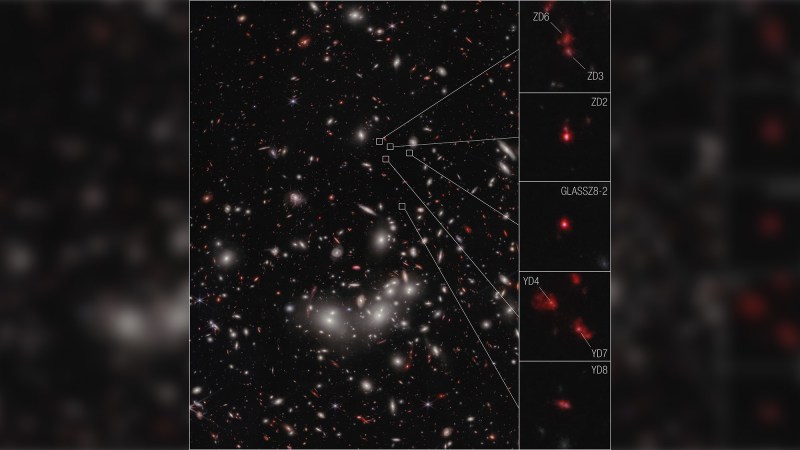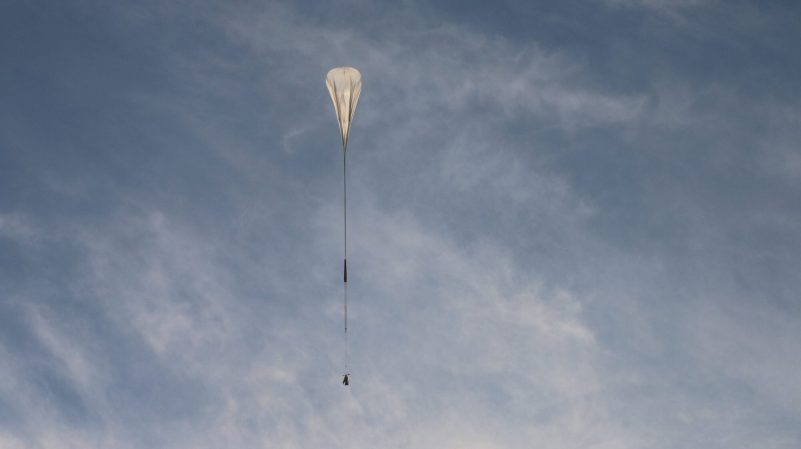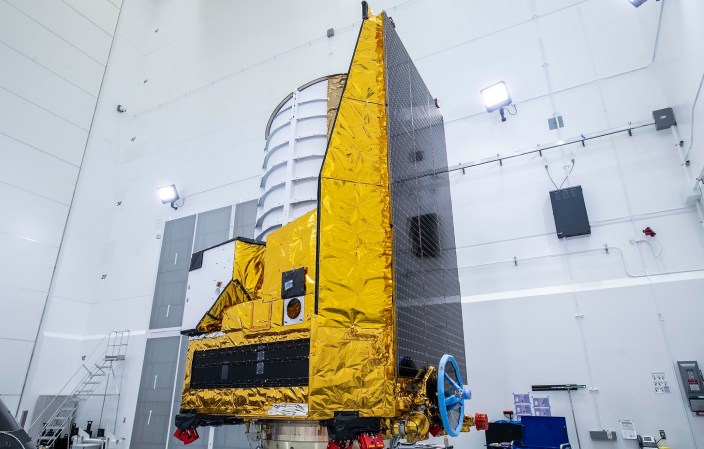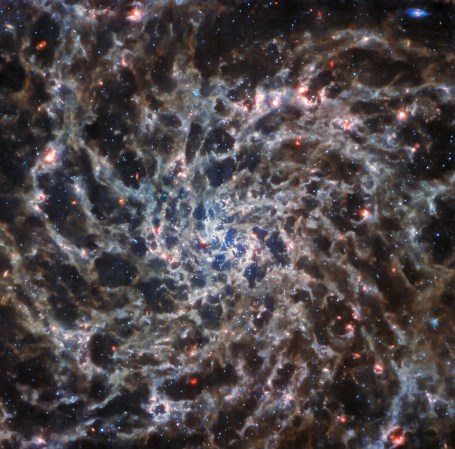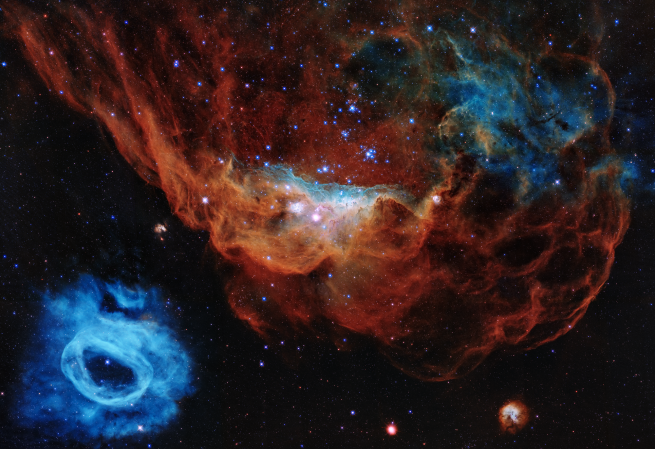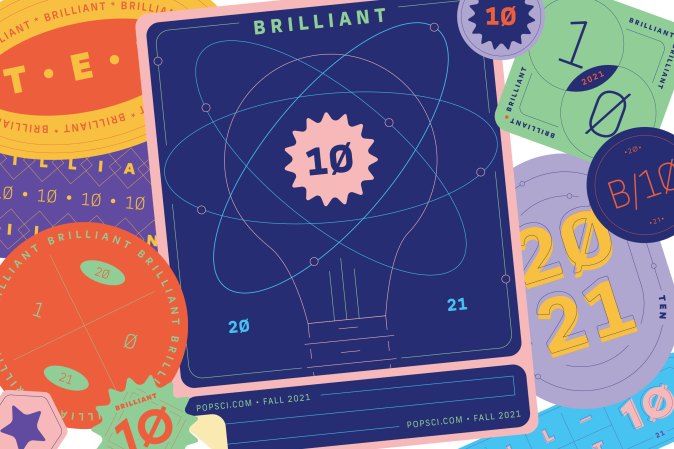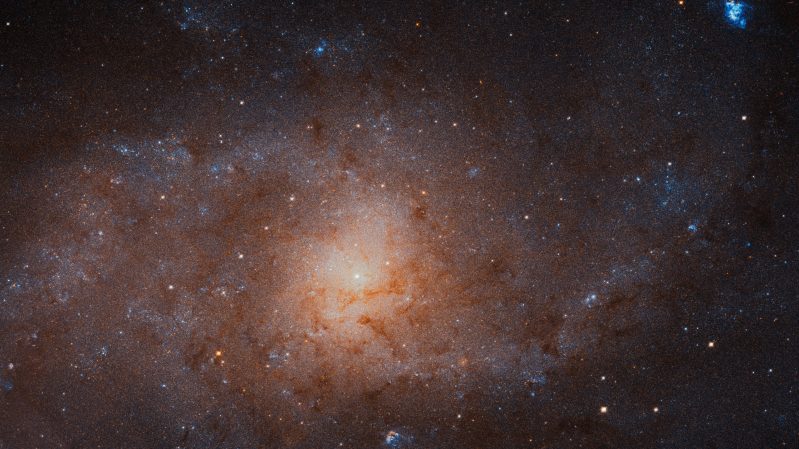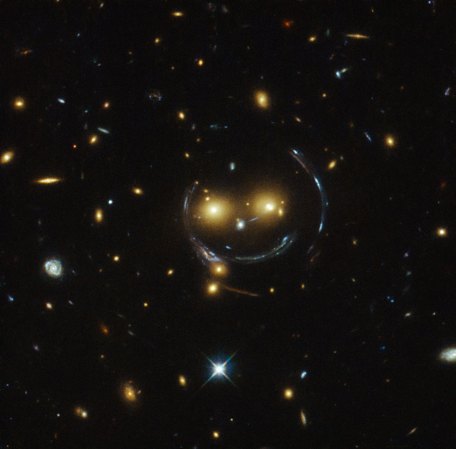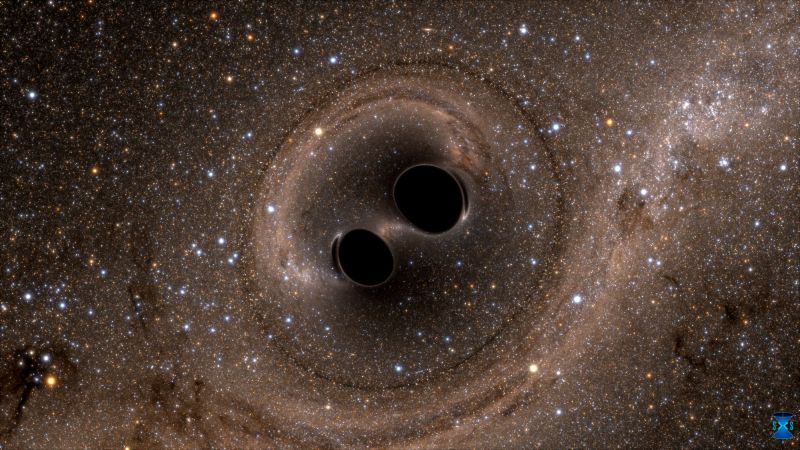

Two of the most powerful space telescopes in the universe have joined forces to showcase a panorama of colorful galaxy clusters about 4.3 billion light-years away from Earth. The image of galaxy cluster MACS0416 is from NASA’s James Webb Space Telescope (JWST) and the Hubble Space Telescope and combines both visible and infrared light.
[Related: Euclid telescope spies shimmering stars and galaxies in its first look at the ‘dark’ universe.]
According to NASA, MACS0416 is a pair of colliding galaxy clusters that will eventually combine to form an even bigger cluster. It includes numerous galaxies outside of the cluster and some other light sources that vary over time. The variation is likely due to a phenomenon called gravitational lensing, where light is distorted and amplified from distant background sources.

Color coding
In the image, different colors represent the varying wavelengths of light. The shortest are blue, the intermediate are green, and the longest are red. The wavelengths range from 0.4 to 5 microns and the variation creates a particularly vivid landscape of galaxies.
The colors also give clues to how far away the galaxies are. The bluest galaxies are relatively close, tend to show intense star formation, and are best detected by Hubble. The more red galaxies tend to be further away and are best spotted by JWST. Some of the galaxies also appear very red because they have a large amount of cosmic dust that tends to absorb bluer colors of starlight.
“The whole picture doesn’t become clear until you combine Webb data with Hubble data,” Rogier Windhorst said in a statement. Windhorst is an astronomer at Arizona State University and principal investigator of the PEARLS program (Prime Extragalactic Areas for Reionization and Lensing Science), which took the JWST observations.
Oh Christmas tree
While the images are pleasant to look like, they were also taken for a specific scientific purpose. The team was using their data to search for objects varying in observed brightness over time, known as transients. All of these colors twinkling together in the galaxy look like shining colorful lights on a Christmas tree.
“We’re calling MACS0416 the Christmas Tree Galaxy Cluster, both because it’s so colorful and because of these flickering lights we find within it. We can see transients everywhere,” said astronomer Haojing Yan of the University of Missouri in Columbia said in a statement. Yan is a co-author of one paper describing the scientific results published in The Astrophysical Journal.
The team identified 14 transients across the field of view. Twelve of the transients were located in three galaxies that are highly magnified by gravitational lensing. This means that they are likely to be individual stars or multiple-star systems that are very highly magnified for a short period of time. The other two transients are located within more moderately magnified background galaxies, so they are likely to be supernovae.
More observations with JWST could lead to finding numerous additional transients and in other similar galaxy clusters.
Godzilla and Mothra
One of the transients stood out in particular. The star system is located in a galaxy that existed roughly three billion years after the big bang and is magnified by a factor of at least 4,000. They nicknamed the star system Mothra in a nod to its “monster nature” of being both very bright and magnified. Mothra joins another lensed star the researchers previously identified that they nicknamed “Godzilla.” In Japanese cinema, Godzilla and Mothra are giant monsters known as kaiju.
In addition to the new JWST images, Mothra is also visible in the Hubble observations that were taken nine years ago. According to the team, this is unusual, because a very specific alignment between the foreground galaxy cluster and the background star is needed to magnify a star this much. The alignment should have been eliminated by the mutual motions of the star and the cluster.
An additional object within the foreground cluster could be adding more magnification.
“The most likely explanation is a globular star cluster that’s too faint for Webb to see directly,” astronomer Jose Diego of the Instituto de Física de Cantabria in Spain said in a statement. “But we don’t know the true nature of this additional lens yet.” Diego is also a co-author of a paper published in the journal Astronomy & Astrophysics that details this finding.
